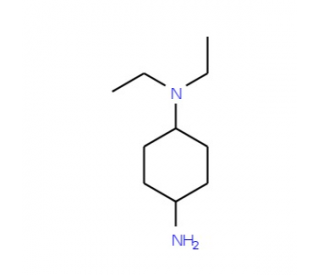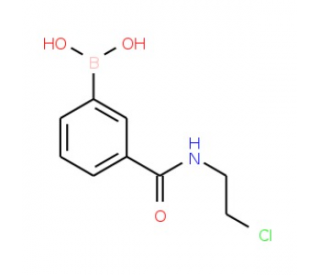详细说明
Species Reactivity
Mouse
Specificity
Detects mouse BAFF in direct ELISAs and Western blots. In Western blots, this antibody does not cross-react with recombinant mouse (rm) 4-1BB Ligand, rmEDA, rmFas Ligand, rmOX40 Ligand, rmTNF-alpha, rmTRANCE, rmTWEAK, recombinant human (rh) APRIL, rhBAFF, rhEDA-A2, rhGITR Ligand, rhLIGHT, rhLymphotoxin alpha 1/ beta 2, rhLymphotoxin alpha 2/ beta 1, rhTNF-alpha, rhTRAIL, rhVEGI, recombinant canine, cotton rat, equine, feline, porcine, or rat TNF-alpha.
Source
Monoclonal Rat IgG 2A Clone # 121808
Purification
Protein A or G purified from hybridoma culture supernatant
Immunogen
Mouse myeloma cell line NS0-derived recombinant mouse BAFF
Ala127-Leu309
Accession # Q9WU72Formulation
Lyophilized from a 0.2 μm filtered solution in PBS with Trehalose. *Small pack size (SP) is supplied as a 0.2 µm filtered solution in PBS.
Label
Unconjugated
Applications
Recommended
ConcentrationSample
Western Blot
1 µg/mL
Recombinant Mouse BAFF/BLyS/TNFSF13B (Catalog # )
CyTOF-ready
Ready to be labeled using established conjugation methods. No BSA or other carrier proteins that could interfere with conjugation.
Intracellular Staining by Flow Cytometry
2.5 µg/10 6 cells
Mouse splenocytes fixed with Flow Cytometry Fixation Buffer (Catalog # ) and permeabilized with Flow Cytometry Permeabilization/Wash Buffer I (Catalog # )
Please Note: Optimal dilutions should be determined by each laboratory for each application. are available in the Technical Information section on our website.
Preparation and Storage
Reconstitution
Reconstitute at 0.5 mg/mL in sterile PBS.
Shipping
The product is shipped at ambient temperature. Upon receipt, store it immediately at the temperature recommended below. *Small pack size (SP) is shipped with polar packs. Upon receipt, store it immediately at -20 to -70 °C
Stability & Storage
Use a manual defrost freezer and avoid repeated freeze-thaw cycles.
12 months from date of receipt, -20 to -70 °C as supplied.
1 month, 2 to 8 °C under sterile conditions after reconstitution.
6 months, -20 to -70 °C under sterile conditions after reconstitution.
Background: BAFF/BLyS/TNFSF13B
BAFF (also known as TALL-1, BLyS, THANK) is a type II transmembrane glycoprotein belonging to the TNF superfamily and has been designated as TNF superfamily member 13B (TNFSF13B). Mouse BAFF is a 309 aa protein consisting of a 248 aa extracellular domain, a 21 aa transmembrane region and a 45 aa cytoplasmic tail (1, 2). BAFF has the typical structural characteristics of the TNF superfamily ligands. It is a homotrimeric protein having the structurally conserved motif known as TNF homology domain (3, 4). A higher ordered structure composed of a cluster of trimeric units resembling the structure of a viral capsid has also been reported (4). Mouse BAFF may be shed from the cell surface by proteolytic cleavage between R126 and Ala 127 to yield a soluble form of the protein detectable in serum (1, 5). Within the TNF superfamily BAFF shares the highest homology (48%) with APRIL (1). BAFF shares with APRIL the ability to bind to BCMA and TACI and also binds specifically to BAFF receptor(BAFF R, also known as BR3 or TNFSFR13C), which is the principal BAFF receptor (6 - 8). All three receptors are type III transmembrane proteins that are expressed in B cells. BAFF and APRIL can form active heteromers that bind TACI (9). BAFF is expressed in peripheral blood mononuclear cells, in spleen and lymph nodes. Its expression in resting monocytes is upregulated by IFN-alpha, IFN-beta, LPS and IL-10. BAFF provides critical survival signals to a subset of B cells with intermediate maturation status (T2 B cells) during the immune response (10). BAFF also plays an important role in the development of lymphoid tissue and enhances the survival of activated memory B cells (7, 11). Human and mouse BAFF share 86% aa sequence identity (1).
References:
Schneider, P. et al. (1999) J. Exp. Med. 189:1747.
Mukhopadhyay, A. et al. (1999) J. Biol. Chem. 274:15978.
Karpusas, M. et al. (2002) J. Mol. Biol. 315:1145.
Liu, Y. et al. (2002) Cell 108:383.
Cheema, G.S. et al. (2001) Arthr. Rheum. 44:1313.
Marsters, S.A. et al. (2000) Curr. Biol. 10:785.
Thompson, J.S. et al. (2001) Science 293:2108.
Ng, L. G. et al. (2004) J. Immunol. 173:807.
Roschke, V. et al. (2002) J. Immunol. 169:4314.
Batten, M. et al. (2000) J. Exp. Med. 192:1453.
Avery, D.T. et al. (2003) J. Clin. Invest. 112:286.
Long Name:
B cell Activating Factor
Entrez Gene IDs:
10673 (Human); 24099 (Mouse); 498666 (Rat)
Alternate Names:
ApoL related ligand TALL-1; B lymphocyte stimulator; BAFF; BAFFB-cell activating factor; B-cell-activating factor; BLyS; BLYSB-lymphocyte stimulator; CD257 antigen; CD257; Dendritic cell-derived TNF-like molecule; DTL; TALL1; TALL-1delta BAFF; TALL1Delta4 BAFF; THANK; TNF- and APOL-related leukocyte expressed ligand 1; TNF and ApoL-related leukocyte expressed ligand 1; TNF homolog that activates apoptosis; TNFSF13B; TNFSF20; tumor necrosis factor (ligand) superfamily, member 13b; tumor necrosis factor (ligand) superfamily, member 20; tumor necrosis factor ligand superfamily member 13B; tumor necrosis factor superfamily, member 13b; tumor necrosis factor-like protein ZTNF4; ZTNF4










 粤公网安备44196802000105号
粤公网安备44196802000105号